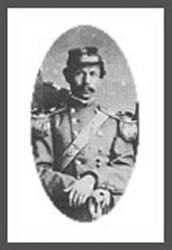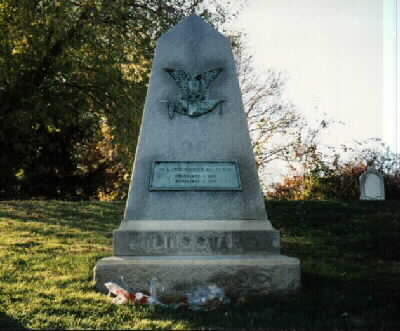JULIUS STAHEL
By: Steve Beszedits
Stahel was born in the city of Szeged, Hungary, on November 5, 1825, into a typical middle class family. Like all sons of families having a similar background, he received a thorough education at the local schools.
Moving to Budapest in 1846, he entered the employ of Gusztáv Emich, one of the country’s leading printers, publishers and booksellers. Working with Emich gave Stahel the opportunity to meet many notable literary figures, among them Sándor Petofi, the greatest lyric poet of Hungary. The two young men became friends, and in January 1848 Petofi even penned a whimsical poem to Stahel, entitled Egy könyvárus emlékkönyvébe [To a Bookseller’s Memorial Book].
At the outbreak of the War of Liberation against the ruling Hapsburg dynasty in the spring of 1848, Stahel immediately joined various patriotic organizations and also enlisted in the revolutionary army, becoming an aide-de-camp with the rank of lieutenant on the staff of Richard Guyon. The British-born Guyon, a Hungarian citizen by virtue of his marriage to Countess Mária Splényi, was one the revolutionary army’s most charismatic and successful leaders. In the battle of Branyiszkó, February 5, 1849, Stahel sustained serious wounds and was decorated for bravery.
By May 1849 the Hungarian insurgents inflicted a series of decisive defeats upon the Hapsburg Imperial Army and the Croat, Serb, Slovak and Rumanian irregulars supporting the House of Hapsburg. A small Russian army, which made an informal incursion into eastern Hungary to help the hard-pressed Hapsburg troops there, was routed and expelled.
To save his disintegrating realm, Emperor Franz Joseph made a formal appeal to Czar Nicholas I for military assistance. The autocrat of Europe was more than willing to extend a hand in stamping out liberalism and soon a Russian army of some 300,000 poured into Hungary. The revolutionaries felt confident that the Russian invasion would mobilize Western support on their side, but their hopes were cruelly dashed.
Governor Lajos Kossuth and thousands of others, Stahel among them, fled abroad after the defeat. Although Stahel found sanctuary in Great Britain, he did not remain for long. Since he played such a minor role in the insurrection, powerful friends were able to assure his return without any repercussions.
Stahel became Emich’s silent partner and maintained a low profile while the country was in the grip of rigid absolutism. As the political situation ameliorated somewhat, he parted with Emich and established his own publishing enterprise. The venture, however, was not successful and he was soon mired in debts. The financial setbacks, as well as personal problems, prompted Stahel to leave Hungary for good in 1856.
Like many other newcomers, he settled in New York City. To support himself, he took employment in journalism. Working in this field enabled Stahel to familiarize himself with many facets of American life, while his association with the German-American press earned him widespread recognition and respect among the German-speaking population of the city.
At the outbreak of the Civil War, Stahel and Ludwig Blenker, a flamboyant German expatriate, organized the 8th New York Volunteer Infantry, the first German-American regiment in the Union army. Stahel became the regiment’s lieutenant-colonel and Blenker its colonel.
At the First Battle of Bull Run, July 20, 1861, the 8th New York was assigned to the First Brigade of the Fifth Division. With Blenker in command of the brigade, Stahel led the regiment. Since the division constituted the Union army’s reserve at Centreville, it was not engaged in the battle proper. Unlike many of the Union troops, Blenker’s men did not disintegrate into a fleeing mob as the Confederates gained the upper hand, but held their ground in perfect formation, covering the retreat to Washington. For their valiant conduct on the battlefield, both Stahel and Blenker were promoted; Blenker was advanced to brigadier-general and Stahel became colonel of the 8th New York. Shortly afterwards, on November 12, Stahel received his star as a brigadier-general.
In the beginning of April 1862 Stahel and the rest of Blenker’s division were ordered to General John C. Frémont’s Mountain Department. In the early part of June, Frémont’s army engaged a force under General Thomas “Stonewall” Jackson for several days, with sharp skirmishing, the Confederates retreating slowly and destroying culverts and bridges to cause delay.
Stahel’s brigade bore the brunt of the fighting in the battle of Cross Keys on June 8, and sustained severe casualties accordingly. Reporting on the engagement, the New York Times stated: “. . . the part taken by Gen. Stah[e]l, and his brigade of Germans, is the theme of general commendation. He has won the popular favor among American as well as foreign officers . . . He is brave and enthusiastic, and was seen during the day in the thickest of the fight, encouraging and urging on his men.”
On June 26 President Abraham Lincoln issued an order creating the Army of Virginia to include Frémont’s corps, and giving the command to General John Pope. Thereupon Frémont asked to be relieved, on the ground that he could not serve under Pope.
Stahel and his troops were assigned to General Franz Sigel’s First Corps. Believing his army to be superior to any force the Confederates could field, Pope wasted little time in launching an ambitious offensive. While the campaign was a disastrous failure, Stahel acquainted himself well. Both Pope and General Robert C. Schenk praised his behavior in the Second Battle of Bull Run, August 29-30, in their official reports.
In wake of various corps reorganizations and reassignments, Stahel assumed temporary command of the Eleventh Corps on December 18, 1862, during the absence of Sigel, and on January 10, 1863, he was named to the command when Sigel assumed command of the divisions comprising the Eleventh and Twelfth Corps.
A few days after John Singleton Mosby’s daring raid behind the Federal lines at Fairfax Court House during the night of March 8, Lincoln summoned Stahel to the White House and ordered him personally to take charge of the cavalry at Fairfax. He told Stahel in no uncertain terms that the raids upon the lines around Washington must stop. The three brigades of cavalry in the Department of Washington were organized as a division, which together with the outposts were placed under Stahel’s command. On March 14, he was raised to the rank of major-general.
Stahel’s elevation to this rank was due not only to his service record, but also to his prominence in the German-American community and his close ties with Carl Schurz, one of the most outstanding figures of the German-Americans. Schurz’s influence on Stahel’s promotion is evident from the letter Schurz wrote to Lincoln on January 25, 1863:
Stahel spent the ensuing months chasing Mosby through the woods, rolling hills, mountain spurs, and winding and unfrequented roads of Loudoun, Fauquier and Fairfax counties. Although he managed to check Mosby, he was no more successful than his predecessors, or his successors, in defeating or capturing the elusive “Gray Ghost.”
On June 27, a few days before the battle of Gettysburg, General Joseph Hooker relieved Stahel of his command and assigned his division to General Alfred Pleasonton’s Cavalry Corps. Stahel was ordered to report to General Darius Couch in the Department of the Susquehanna. There he organized the 20th, 21st and 22nd regiments of Pennsylvania cavalry.
When President Lincoln delivered his famous Gettysburg Address on November 19 at the dedication of the military cemetery established for those who had fallen at the battle of Gettysburg, Stahel commanded the guard of honor.
On March 13, 1864, Stahel was transferred to the Department of West Virginia where he became Sigel’s chief of cavalry and chief of staff. In late April, Sigel marched his army into the northern part of the Shenandoah Valley. Consolidating Confederate forces in the Valley, General John C. Breckenridge met Sigel’s column at the small town of New Market on May 15. In the ensuing engagement, often called “the biggest little battle of the war,” the Confederates scored a resounding victory.
Sigel was immediately relieved of his command and was succeeded by General David Hunter. Hunter was ordered to move up the Shenandoah Valley, cross the Blue Ridge Mountains to Charlottesville, and then invest Lynchburg. To contest Hunter’s movement, Confederates under General William E. “Grumble” Jones met Hunter’s army at the village of Piedmont, some seven miles southwest of Port Republic, on June 5.
After repelling two attacks, the Southerners were disastrously beaten by a flank attack. Stahel played a conspicuous role in the victory. Personally leading some of his dismounted troopers to support the infantry, he was hit by a bullet in the left shoulder. “It . . . struck the bone and glanced off,” he recalled decades later, “and the whole of my left arm turned black – probably from the shock of the bullet blow on the bone.” He left his command only for the time required to allow his surgeon to dress the wound. With his arm heavily bandaged and quite useless, Stahel had to be helped onto his horse. Despite the encumbrance and intense pain, he led his mounted men in the decisive charge which routed the Confederates.
Hunter in his official letter to General Henry W. Halleck dated June 9 said: “It is but justice to Major-General Stahel to state, that in the recent engagement he displayed excellent qualities of coolness and gallantry, and that for the final happy result the country is much indebted to his services.” Twenty-nine years later, on November 4, 1893, Stahel was awarded the Medal of Honor for his valor in this battle.
Due to his wounds, Stahel was temporarily relieved of his command and sent to Martinsburg to gather and forward additional supplies for the march on Lynchburg. Several weeks elapsed before he was able to resume field duties.
General Robert E. Lee, intent on protecting his supply base, dispatched General Jubal Early and the entire Second Corps of the Army of Northern Virginia to Lynchburg. Hunter and Early arrived at the city simultaneously on the 17th. On the afternoon of the following day, Hunter made an assault on the south side of Lynchburg, but the attack was feeble and easily repulsed. Deciding that the strength of the works and the Confederates assembled were too formidable, Hunter decided to withdraw that very evening under the cover of darkness. He retreated, not by his Shenandoah line, but to Charleston, in the Kanawha Valley.
When Early discovered Hunter’s movement, he put all his forces in pursuit and pressed the Union rearguard relentlessly. Since Hunter’s withdrawal left the Shenandoah devoid of Federal troops, Early marched down the Valley, crossed the Potomac River and threatened Washington, D.C.
Hunter’s tactical error tarnished his reputation and precipitated his dismissal from command. After he was replaced by General Philip Sheridan, Stahel was transferred to the Middle Department, and assigned to duty as president of a court martial in Baltimore. He resigned his commission on February 8, 1865.
Early in 1866 Stahel was appointed by President Andrew Johnson consul at Yokohama, Japan. There he succeeded in opening additional ports to American trade. Afterwards, he served as consul to Osaka and Hiogo. He remained in Japan until 1884, when he was made consul in Shanghai, China. Also serving in the diplomatic corps in the Far East during Stahel’s tenure was none other than his one-time nemesis, John Singleton Mosby. They became friends and Mosby even recommended Stahel’s appointment as Assistant Secretary of State.
Resigning from the consular service in 1885, Stahel returned to New York City. According to one biographical sketch, Stahel “represented his adopted country with dignity, ability and tact.”
Subsequently, for a number of years he was an executive with the Equitable Life Assurance Society. At the Hoffman House, his residence for some twenty-five years, he was always simply called “The General.” Many of the younger residents, unaware of his illustrious past, thought that the title was purely honorific, bestowed on the basis of his erect military bearing. He was a member of several clubs, among them Army and Navy, and Pilgrims (New York), and also belonged to the New York Commandery of the Loyal Legion of the United States.
In the twilight of his life Stahel made numerous public appearances, some joyous, others sad. Death took its inevitable toll on friends and old comrades with each passing year and it was his painful duty to attend a never-ending procession of funerals. He was one of the honorary pall-bearers at the internment of Carl Schurz in May 1906.
Stahel died of angina pectoris on December 4, 1912 in New York City at the Hotel St. James, his residence during the final months of his life. He was buried in Arlington National Cemetery. His honorary pallbearers included several military and civilian notables: General Nelson Miles, Rear-Admiral Adolph Marix, George P. Wilson and Simon Wolf.
Stahel’s original family name was Számwald; he took Stahel upon coming to America. In deference to his change of name, several American publications give his name as Stahel-Szamwald. Hungarian works prior to 1856 indicate his name as Számwald and subsequently as Stahel, Számwald, or Stahel-Számwald. Some American biographical dictionaries, memoirs and newspaper articles claim that Stahel’s original name was Count Serbiani; a contention which is absolutely incorrect. A surprising number of American writings refer to him as Stahl instead of Stahel.
Certain Hungarian and American biographical sketches describe Stahel as a life-long bachelor. However, according to Ferenc Agárdi’s article in the April-June 1963 issue of the New Hungarian Quarterly, Stahel was married and the death of his young wife in childbirth was one of the factors which prompted him to emigrate a second time.
For additional information on General Stahel please click here: MOLLUS (Military Order of the Loyal Legion of the United States).
Arlington National Cemetery Website Biography
From Various Other Published Sources:
It is Recognized And Acknowledged That Some Aspects Will Be Noted To Be In Conflict
With The Article Authored By Mr. Beszedits.
Born in Szeged, Hungary, on November 5, 1825. He attended school in his hometown and in Budapest, and then entered the Austrian Army as a private and rose to Lieutenant. However, in the struggle for Hungarian independence he cast his lot with the revolutionary cause and, after the movement was suppressed with the aid of Prussia in 1849, he fled the country.
He first lived in London and Berlin and was a teacher and journalist before coming to the United States in 1859. For the next two years he was employed by the German-language newspaper in New York City.
In 1861 he and Louis Blenker recruited the 8th New York Regiment (1st German Rifles) and he was appointed Lieutenant Colonel of the Regiment, with Blenker being named the Colonel. He took part in the battles of First Bull Run in which the regiment covered the fleeing Union forces. He then commanded a regiment and then a brigade in Blenker’s 1st Brigade of Dixon Miles’ 5th Division.
In the spring of 1863 he was assigned to command Union cavalry units protecting Washington, DC. He was promoted to Major General, United States Volunteers, on March 17, 1863 ( for reasons even obscure to military historians) and was ranked just under Philip Henry Sheridan in rank. In the spring of 1864, he led a Division of Cavalry under David Hunter in the Shenandoah Valley of Virginia. At the battle of Piedmont on January 5, 1864, he was greatly distinguished in an action which subsequently (1893) led to the awarding of the Medal of Honor.
He then served on courts-martial duty until he resigned his commission on February 8, 1865. After the war, he served for years in the consular service in China and Japan.
Upon returning to the United States from those assignments, he became affiliated with the Equitable Insurance Company in New York City.
A lifelong bachelor, he died in a New York Residence Hotel on December 4, 1912 at the age of 87. He was buried in Section 2 of Arlington National Cemetery.
STAHEL, JULIUS
Rank and organization: Major General, U.S. Volunteers. Place and date: At Piedmont, Virginia, 5 June 1864. Entered service at: New York, N.Y. Born: 5 November 1825, Hungary. Date of issue: 4 November 1893.
Citation:
Led his division into action until he was severely wounded.
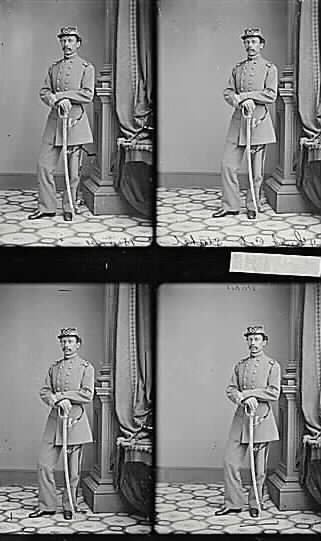
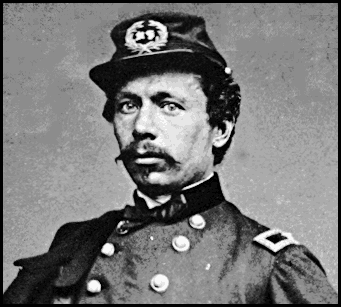
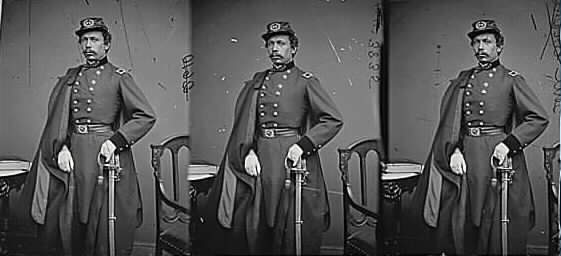
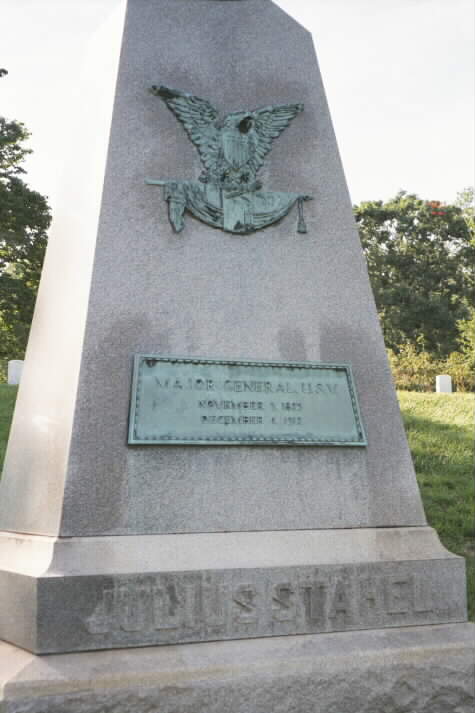
Michael Robert Patterson was born in Arlington and is the son of a former officer of the US Army. So it was no wonder that sooner or later his interests drew him to American history and especially to American military history. Many of his articles can be found on renowned portals like the New York Times, Washingtonpost or Wikipedia.
Reviewed by: Michael Howard

